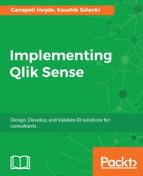In the previous chapter, we looked at the importance of good architecture. We understood various aspects of architecture, both from infrastructure and data perspective. The chapter focused on other important aspects as well, such as backup and recovery design. In this chapter, we will learn about the best practices in dashboard designing and the art of developing a quality and user-friendly dashboard, which will cater to all the business requirements and provide business users with an ability to analyze their data, along with flexibility.
Along with this, we will see how to execute the project based on the data architecture we built in the previous chapter. We will also look at various best practices while developing dashboards.
This chapter is going to be the heart of the book as it will take you through the actual development once we have the requirements from the business users. In this chapter, you will learn how to develop quality code, tackle common coding challenges, and write easy maintainable code.
The project sustainability will depend on how best you code your scripts and design the visualization. A poorly coded project may initially look okay, but over a period will cause performance issues, leading to user dissatisfaction and ultimately the end of the adoption.
Let us start the chapter with couple of quotes which inspire us to write good code:
Both the preceding quotes try to teach us the importance of coding. In the world of information technology, it is said that writing a fresh new code is much easier then changing or modifying an existing code. This is true because at times the codes are written without following the best practices. Same parameter applies to Qlik Sense projects, as it also involves scripting. We will learn how to write quality codes later in this chapter.
In this chapter, we will look at some of the areas in Qlik Sense where we follow good practices:
- Data extraction process
- Building data model
- Common challenges of data modeling
- Script management
- Best practices in data modeling
- Data modeling validation
- Security strategy
- Visualization strategy
- Choices of objects
- Use of extensions
- Visualization best practices
- Story telling
